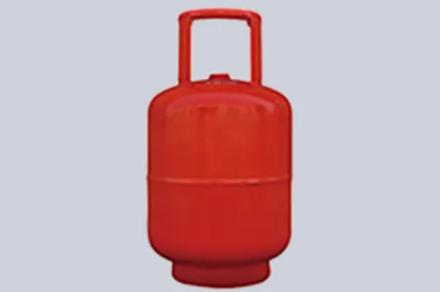Selecting the appropriate LPG (Liquefied Petroleum Gas) gas cylinder is a crucial decision for both residential and commercial consumers. Whether you are using LPG for cooking, heating, or any other purpose, the right cylinder size and capacity can significantly impact convenience, efficiency, and safety. In this comprehensive guide, we aim to provide you with valuable insights into the different LPG gas cylinder sizes available, their capacities, and important usage considerations. Armed with this knowledge, you can confidently make the best choice to meet your specific requirements.

The Role of LPG Gas Cylinders
LPG gas cylinders serve as portable and convenient storage vessels for liquefied petroleum gas. These cylinders allow users to access LPG for various applications without the need for a direct pipeline connection. As such, they have become a popular choice for residential kitchens, outdoor grilling, camping, and other commercial and industrial purposes.
LPG Gas Cylinder Sizes and Capacities
LPG gas cylinders are available in different sizes, each designed to cater to various usage scenarios. The most common sizes found in the market include:
1. 9 kg LPG Cylinder
The 9 kg LPG gas cylinder is one of the most widely used sizes, popular in residential settings for cooking purposes. Its relatively compact size makes it easy to handle and store while providing a sufficient quantity of gas for regular use.
2. 12.5 kg LPG Cylinder
The 12.5 kg LPG gas cylinder is often preferred by small businesses and commercial establishments that require a higher gas capacity than the standard 9 kg cylinder. It strikes a balance between portability and a longer duration of use.
3. 15 kg LPG Cylinder
The 15 kg LPG gas cylinder is suitable for consumers with higher gas requirements or those who prefer less frequent refilling. It is commonly used in commercial kitchens, restaurants, and small-scale industries.
4. 45 kg LPG Cylinder
The 45 kg LPG gas cylinder is the largest size available for domestic use. It is commonly used in residential settings where high gas consumption is expected, such as for heating or running multiple gas appliances.
Usage Considerations
When choosing the right LPG gas cylinder for your needs, several important factors should be taken into account:
Gas Consumption Rate
Calculate your average gas consumption rate based on the intended usage and the number of gas appliances you intend to connect. This estimation will help you determine the appropriate cylinder size and capacity required to meet your needs comfortably.
Frequency of Refilling
Consider how often you are willing to refill the gas cylinder. Smaller cylinders may require more frequent refilling, while larger cylinders can last longer before needing a refill.
Portability
If portability is a key consideration, opt for a smaller and lighter cylinder that is easier to transport and handle.
Storage Space
Assess the available storage space at your premises. Choose a cylinder size that fits well and is easy to store safely.
Safety Features
Ensure the gas cylinder you choose complies with safety standards and features essential safety elements, such as a pressure relief valve and leak detection mechanisms.
Conclusion
Selecting the right LPG cylinder size and capacity is essential for ensuring a safe and efficient supply of LPG for your needs. We have explored the different cylinder sizes available and their respective capacities, allowing you to make an informed decision based on your usage requirements. Additionally, we highlighted crucial usage considerations and safety precautions to follow when handling LPG gas cylinders.
By following these guidelines, you can confidently choose the perfect LPG gas cylinder that best suits your needs and ensures a seamless experience with this versatile fuel source.





Comments
0